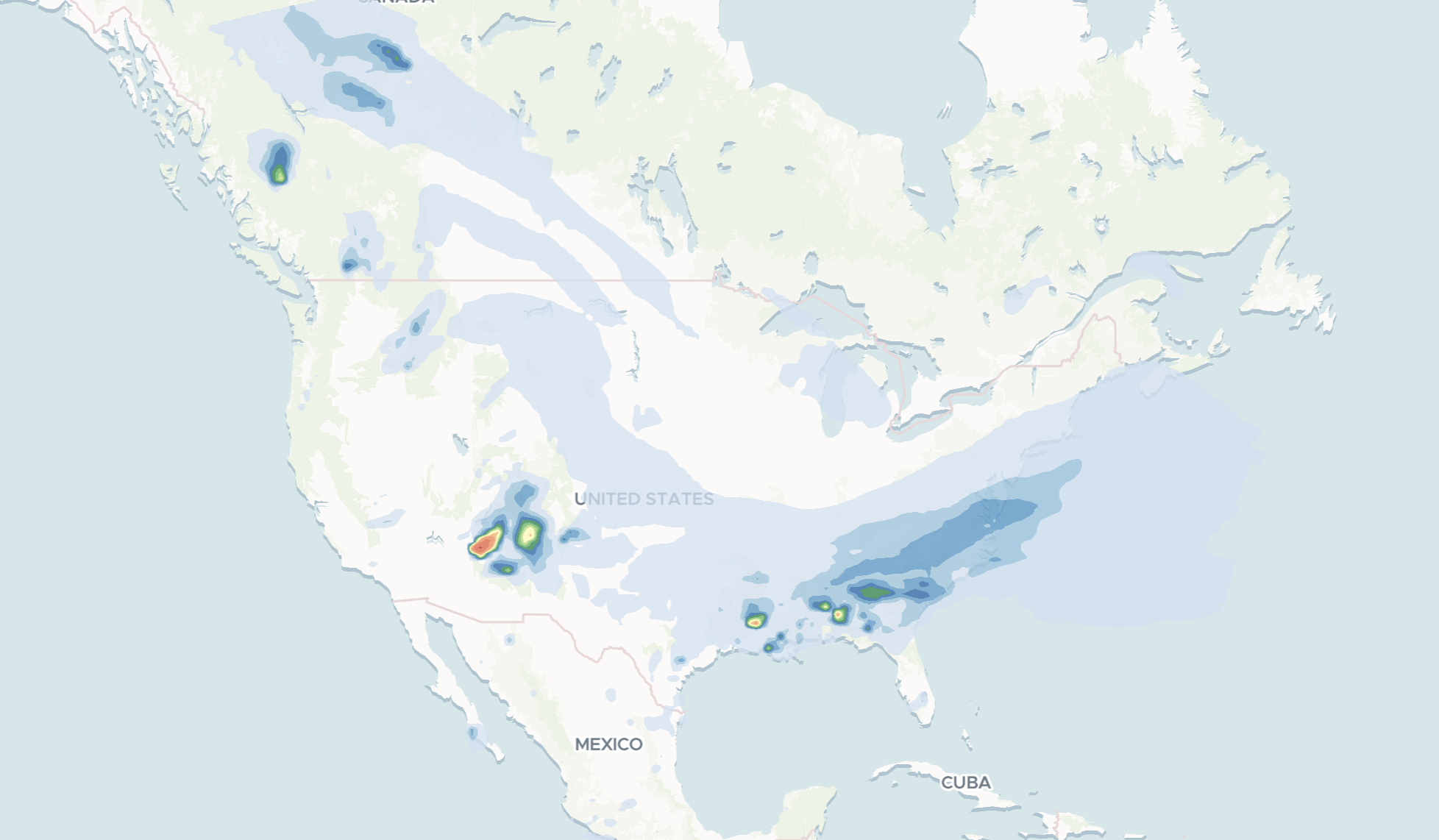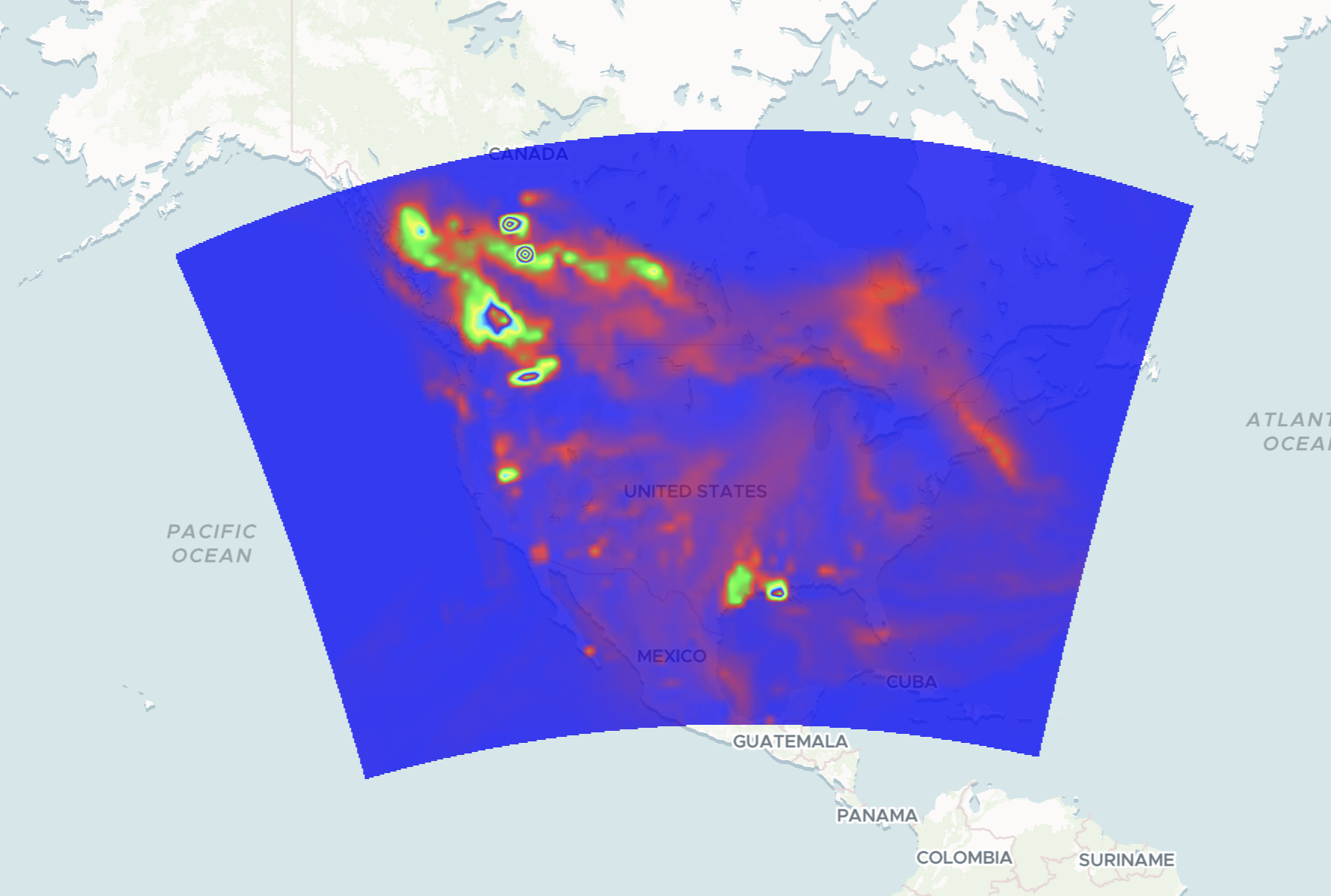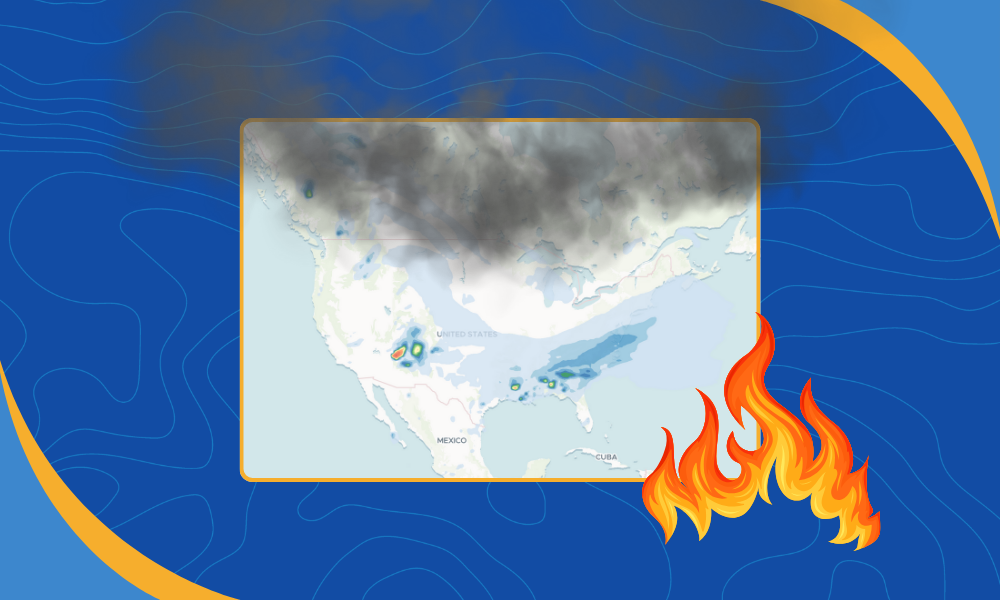We’re excited to announce that RAP Smoke model data from NOAA is now part of the products we ingest and deliver to our customers. This addition gives developers and analysts a new way to visualize smoke movement and density across North America. It is especially useful for consumer weather apps, visibility tools, and air quality monitoring platforms.

Vertically Integrated RAP Smoke Model Data
The High-Resolution Rapid Refresh Smoke model (HRRR-Smoke) is part of the RAP family of models. Unlike the HRRR model we use for regular weather data, this one runs once a day and specializes in particulate movement.

Most users will start with the Vertically Integrated Smoke field, measured in milligrams per square meter. This provides a clear picture of how much smoke will be present, which can be intuitively correlated with hazy skies or unhealthy air. For consumer weather apps and dashboards, this data adds a meaningful layer of context for users checking air quality or visibility.
Other Smoke Variables
Beyond vertically integrated smoke, the RAP Smoke model provides several additional variables, including mass density, shown here in Terrier using our default colormap. Users can apply custom color maps or visualization parameters to suit their specific application or branding needs.

There are also height-specific variables available in the model. If those are relevant to your project, we can easily propagate them. Once we read a model, it is straightforward for us to include additional variables upon request.
Use Cases & Data Values
The RAP Smoke model data has clear value for consumer-focused weather apps and sites, where users are increasingly seeking air quality insights. However, it also supports broader applications, from transportation visibility forecasting to public safety dashboards and environmental monitoring.
This data is now available to all of our customers. If you would like to include it in your stack, just let us know. It can also be added to your Web Coverage Service (WCS) package or WMTS/WMS static tile service as needed.
Closing Thoughts
Adding the RAP Smoke model data extends what our visualization stack can deliver for air quality and visibility monitoring. It is another example of how we continue to expand the models available through our ecosystem, providing users with more flexibility and precision in displaying atmospheric conditions.
If you would like to integrate the RAP Smoke model or explore additional smoke-related datasets, reach out to our team, and we will help you set it up quickly.

